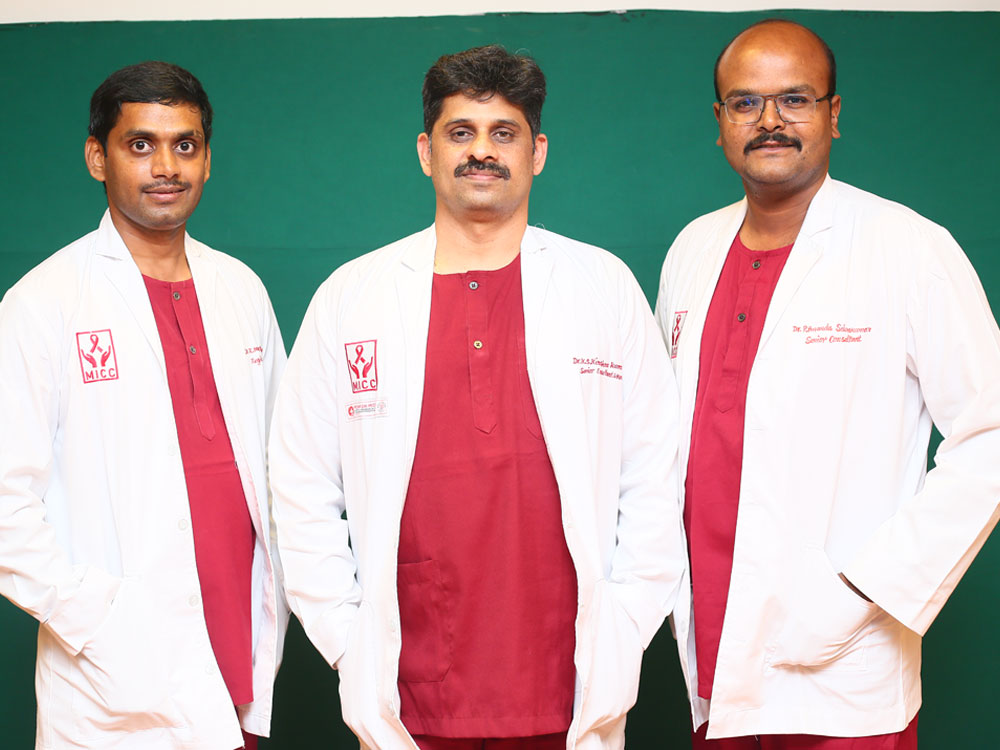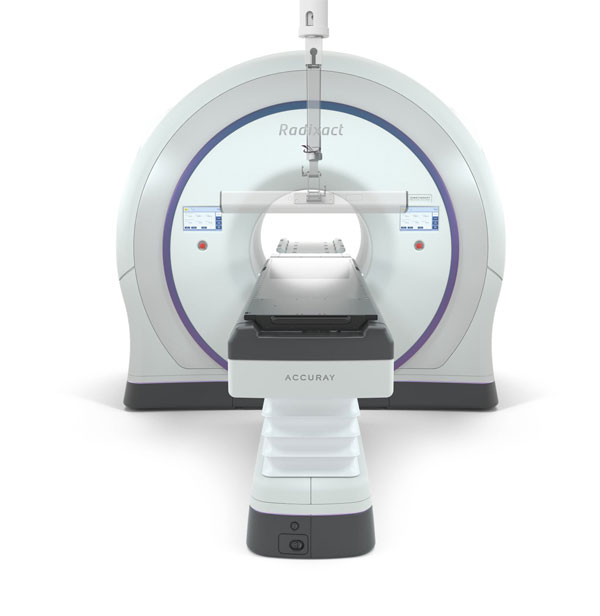
Bringing you the latest in the fight against cancer.
The Department of Radiation Oncology, a part of the oncology services in our hospital for nearly thirty three years and has treated more cancer patients with radiation therapy. It also plays a vital role in managing, treating and curing cancer. Radiation Oncology is non-invasive, fast and accurate, often performed as an outpatient procedure. We adhere to international standards of quality with top-of-the-line equipment and quality facilities backed by an experienced team of doctors.
Facilities
- Siemens Linear Acceleration 2D & 3D
- Electron beams can be created with high energy LINACS. This is of particular value in treating superficial lesions.
- Brachytherapy
- Treatment planning system
- Mould Room Accessories
- Tomotherapy with Clear RT and Synchrony

New Technologies:
Intensity-modulated radiation therapy (IMRT):
uses the same linear accelerator as conventional therapy but involves dynamic multi-leaf collimators that use movable "leaves" to conform the radiation beam to the shape of the tumor from multiple directions. IMRT greatly enhances the ability to tailor the radiation dose to each patient's individual anatomy. IMRT also allows higher radiation doses to be focused to regions within the tumor while minimizing the dose to surrounding normal critical structures.
Image-guided radiation therapy (IGRT):
IGRT combines traditional radiation treatment with a simultaneous CT scan or X-ray to allow for greater precision and accuracy when targeting and treating tumors. IGRT is the process of frequent two and three-dimensional imaging, during a course of radiation treatment, to ensure that the treatment volume is being accurately targeted.
Volumetric modulated arc therapy (VMAT):
With volumetric modulated arc therapy (VMAT), single or multiple radiation beams sweep around the patient, greatly reducing treatment time compared to conventional radiation treatment. This new technology also offers the radiation oncologist more control and flexibility to deliver a carefully targeted dose so that only the tumor receives a high dose of radiation
Tomotherapy with Clear RT and Synchrony
Tomotherapy with clear RT and Synchrony is the machine used to precisely target the size, shape and location of the patient’s tumor and thereby reducing normal tissue dose (side effects) by adjusting the radiation beam’s size, shape and intensity.
Other Facilities in Department of Radiation Oncology
Brachytherapy with Image Guidance (IGBT)
HDR Brachytherapy is a clinically proven and economical option for treatment in various Cancers. ICRT (Ca Cervix & Ca Endometrium), ILRT (Ca Oesophagous), Interstitial (Ca Breast) and Surface Mould Brachytherapy.
Brachytherapy is a high precision radiation therapy, in which a radiation source is placed close to the tumor itself, to kill cancer cells and shrink the tumor. This precision Brachytherapy enables the application of a highly concentrated dose of radiation inside a small area. This causes less damage to the normal tissues and organs over short periods of exposure.
Treatment Planning System (TPS)
Computerized Treatment Planning Systems are used in external and internal beam radiation therapy to generate beam shapes for dose distribution. This provides maximum control and minimizes normal tissue complication while providing a 3D view of patient anatomy and tumor. Besides, the CT scan has networking with TPS which makes the treatment procedure highly precise.
Stereotactic Radiation Therapy
A specialized type of external beam radiation therapy called stereotactic radiation uses focused radiation beams targeting a well-defined tumor, relying on detailed imaging, computerized three-dimensional treatment planning and precise treatment set-up to deliver the radiation dose with extreme accuracy (i.e., stereotactically).

Dr.Kirushna Kumar K S
MD (Radi & Oncolo)
Sr. Consultant & Head

Dr.P. Ananda Selvakumar
MD (Radi & Oncolo)
Senior Consultant

Dr.R. Manirathinam
MD (Radi & Oncolo)
Associate Consultant



